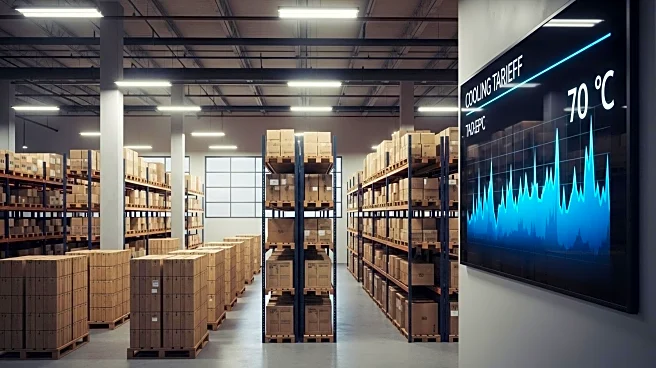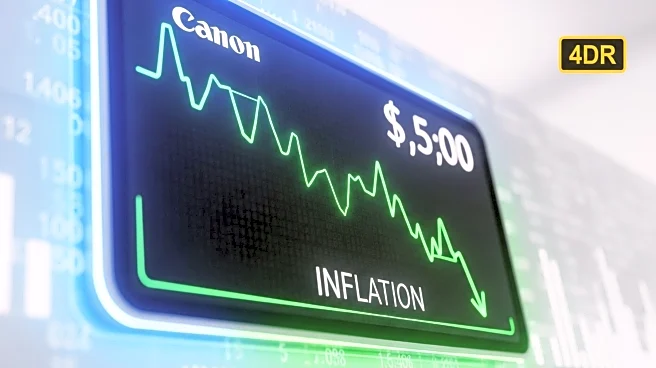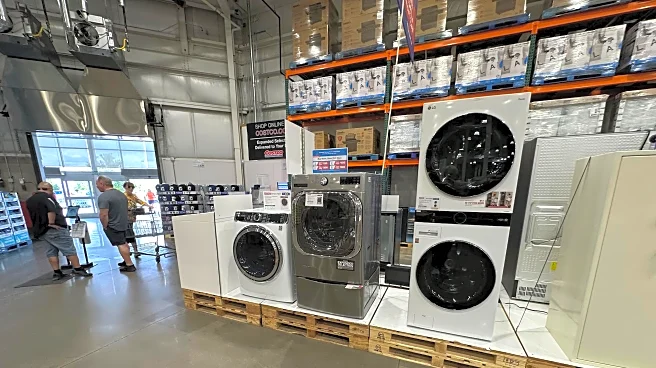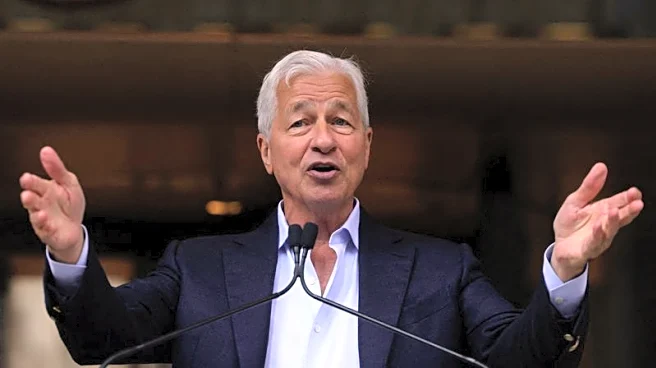What's Happening?
New data from the Bureau of Labor Statistics indicates that U.S. producer prices fell by 0.1% in August, cooling annual inflation to 2.6% from a revised 3.1% in July. This decrease was driven by a significant 1.7% drop in trade services, reflecting changes in profit margins for retailers and wholesalers. Economists suggest that businesses may be absorbing higher costs due to tariffs, potentially leading to higher consumer prices in the future. The report shows that while core producer prices rose slightly, overall inflation at the wholesale level has not escalated significantly despite the tariffs.
Why It's Important?
The cooling of wholesale inflation provides a temporary relief from concerns about tariff-induced price increases. However, shrinking profit margins could signal future price hikes for consumers, impacting household budgets and spending. The data supports expectations for a Federal Reserve interest rate cut, as it suggests inflationary pressures are not as severe as anticipated. This development is crucial for economic stakeholders, including investors and policymakers, as it influences monetary policy and economic forecasts.
What's Next?
The Federal Reserve is expected to consider this data in its upcoming interest rate decision, with a rate cut likely. Economists will be analyzing the forthcoming consumer price index data to assess the impact of tariffs on consumer prices. Businesses may continue to absorb costs, but there is a risk that these could be passed on to consumers, affecting inflation and economic growth.













